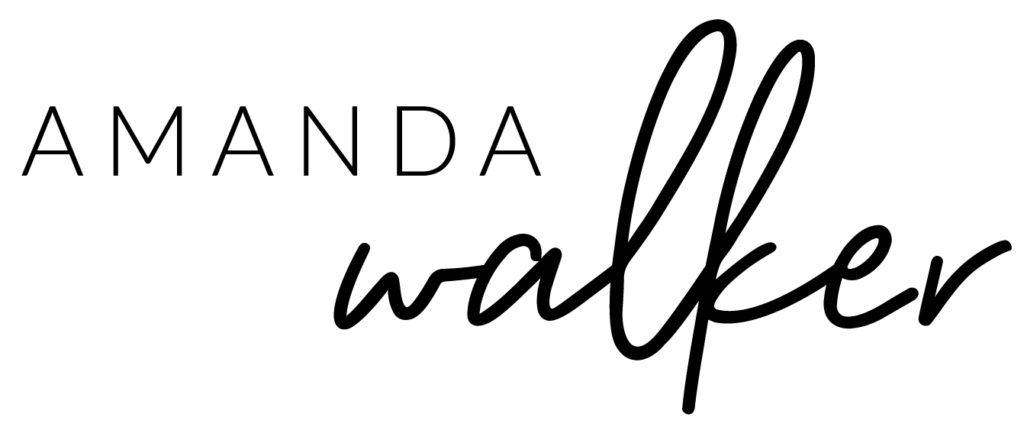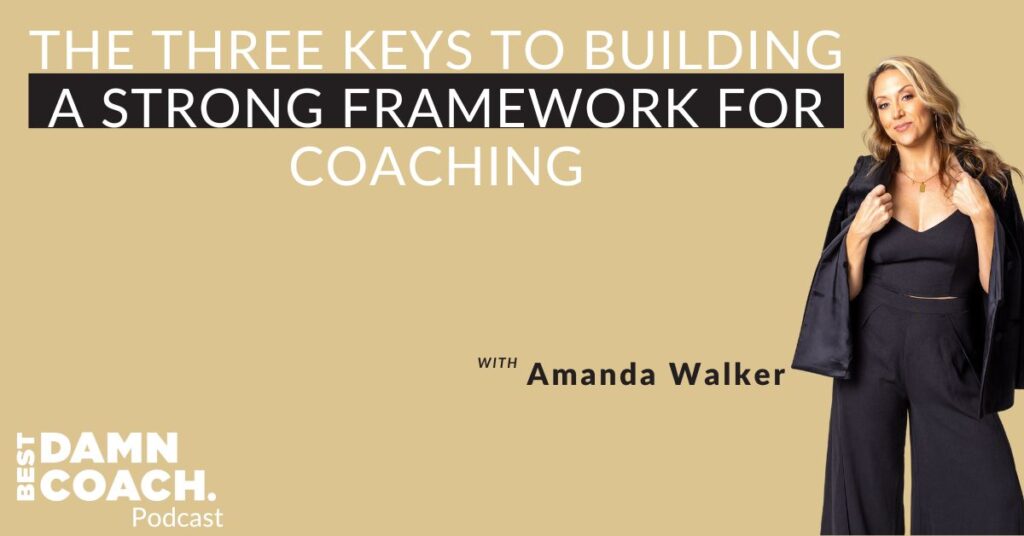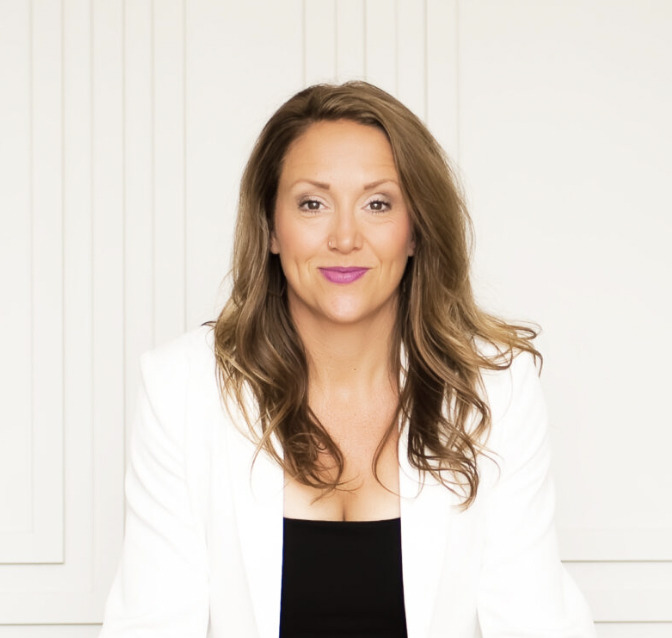The Three Keys To Building A Strong Framework For Coaching
Coaches, ever found yourself diving headfirst into a sea of coaching frameworks to stand out? Instead, you get tangled with acronyms that feel forced and lacking in connection. Well, you’re not alone. This episode breaks down the ingredients of frameworks that not only catch the attention of your students but pack a punch with tangible results. Your journey to building an impactful framework for coaching begins here.
What is a framework?
Coaching serves as a structured approach, providing a systematic guide for coaches and a clear path for clients. Frameworks are an essential tool in the coaching toolbox. Aside from making you stand out from the sea of sameness, they put a structure to the coaching process and provide clarity for clients.
Incorporating a framework into coaching practices offers a myriad of benefits and positive impact to both coaches and clients. An effective framework enhances client engagement and sets coaches apart in their niche.
3 key elements of a strong framework
-
It starts in the end
Building a coaching framework from the desired result and reverse engineering ensures a well-paced coaching journey and intentional progression toward the set goals.
Here’s how you can implement this approach in your coaching practice. Start by thinking about the end goal you want to achieve with your client. Picture the desired outcome clearly in your mind. Then, work backward from there. Break down the steps needed to reach that goal, step by step.
By beginning with the end in mind and reverse engineering the process, you’ll ensure a smooth and intentional coaching journey. This method helps you pace your sessions effectively and keeps you focused on guiding your client toward their goals with purpose.
-
Signature content
Incorporating your personal experiences into your coaching framework isn’t about showcasing perfection; it’s about being relatable and human. It’s about showing your clients that you’re on this journey with them and that you have the tools and insight to help them succeed. It offers benefits to your coaching practice that cannot be ignored:
-
- Reflects Your Uniqueness: Your personal experiences are what make you unique as a coach. By infusing them into your coaching framework, you’re showcasing your individuality and what sets you apart from other coaches in the field.
- Builds Authentic Connections: Clients are drawn to authenticity. Sharing your personal experiences allows you to connect with your clients on a deeper level. It shows them that you’ve been where they are and that you understand their journey firsthand.
- Increases Client Engagement: When clients see themselves reflected in your experiences, they’re more likely to engage with your coaching process. They feel understood and confident that you have the insight to guide them effectively.
- Enhances Trust and Credibility: Sharing your journey builds trust with your clients. It demonstrates your credibility as someone who has successfully navigated similar challenges and achieved positive outcomes.
-
A visual representation
Integrating visuals isn’t just about making things look pretty; it’s a game-changer for both you and your students. The goal is to make your coaching framework not only informative but also visually stimulating. By doing so, you’re not just teaching; you’re creating an experience that resonates with your students and reinforces your coaching brand.
-
- Enhanced Understanding: Visual representations break down complex concepts, making it easier for students to grasp intricate details. It’s like turning a complex puzzle into a clear roadmap, ensuring your students navigate the coaching journey with confidence.
- Improved Memorability: Ever heard the phrase “a picture is worth a thousand words”? Well, it holds true in coaching too. Visuals create lasting impressions, making your coaching framework more memorable. Students can recall and apply key concepts effortlessly.
- Brand Recognition: Visual elements in your coaching framework contribute to building your coaching brand. When your visuals become synonymous with your coaching style, you’re not just teaching; you’re leaving a lasting impression on your students. Your brand becomes a visual representation of trust and expertise.
- Increased Engagement: Let’s face it, staring at pages of text can be daunting. Visuals inject a dose of excitement into your coaching sessions. They captivate your students’ attention, making the learning experience more engaging and enjoyable.
What weak frameworks contain
- No tangible results
Without tangible outcomes in coaching frameworks, it’s like navigating a ship without a destination. Students can feel lost, unsure if they’re making progress or reaching their goals.
Tangible outcomes serve as a roadmap with marked destinations. Students can see where they’re headed, track their progress, and celebrate each milestone. This not only boosts their confidence but transforms coaching from a vague experience into a purposeful and impactful journey with real, measurable results.
- An acronym with nothing tangible-named to convey an outcome
Starting with a catchy acronym might seem cool, but in coaching frameworks, it often waters down the real impact. Many coaches fall into the trap of choosing a clever acronym first, then forcing words into it for branding. The result? A forgettable and less effective framework. Instead, let’s be intentional. Choose an acronym that clearly conveys the curated results, not the other way around. The Reverse Design method, for example – it’s straightforward and purposeful.
Avoid the fluff. Many coaches use high-sounding terms like empowerment without really defining what it means in tangible actions and achievements. In the Framework Builder Lab, we steer away from vague terms. We focus on intentional frameworks that clearly spell out tangible outcomes. Moving past buzzwords and create frameworks that truly make an impact.
How to learn to build theirs in the FBL
Skip the guesswork and fluff in your coaching framework. Join me in the Framework Builder Lab, where you’ll learn the art of crafting intentional coaching frameworks. I’ll walk you through the steps on how to build your signature coaching framework that has clear structures and offers tangible outcomes.
Join the Framework Builder Lab at amanda-walker.com/lab, where your transformative coaching journey begins.
Creating a framework for your coaching practice can be a rewarding journey rather than an overwhelming one. Now that you know what to prioritize, you can go back to building your framework for coaching with a fresh mindset and renewed confidence.
And if you want to take your framework building to the next level, jumping into the FBL will be one of the best investments you’ll ever make.




